The Asus M2N32-SLI Deluxe Motherboard Review
The Tests: Overall System Performance and Memory Bandwidth
PCMark05:
PCMark05 is an application-based benchmark and a premium tool for measuring overall PC performance. It uses portions of real applications instead of including very large applications or using specifically created code. This allows PCMark05 to be a smaller installation as well as to report very accurate results.
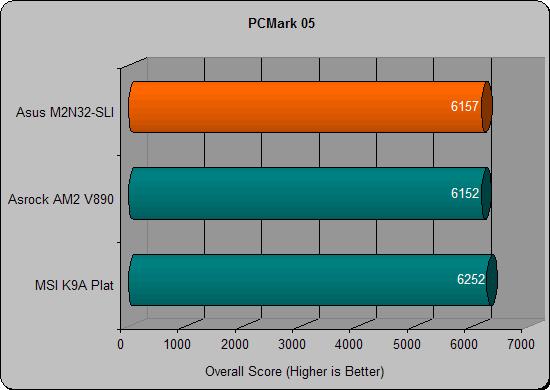
We see pretty close scores between the Asus board and the Asrock board in the PCMark testing. Though they are close, the MSI board, with its ATI chipset flexes its muscle here, outscoring its opponents by around one hundred points, which is a pretty significant difference in this test.
Everest Version 2.20:
Everst 2.20 is a professional system information, diagnostics and benchmarking program for Win32 platforms. It extracts details of all components of the PC. It also tests the actual read and write speeds of your memory giving a fairly accurate look of true memory performance.
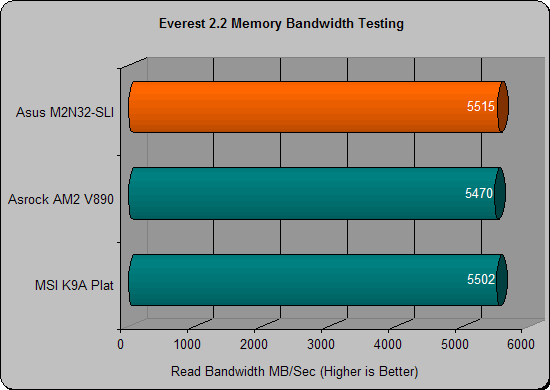
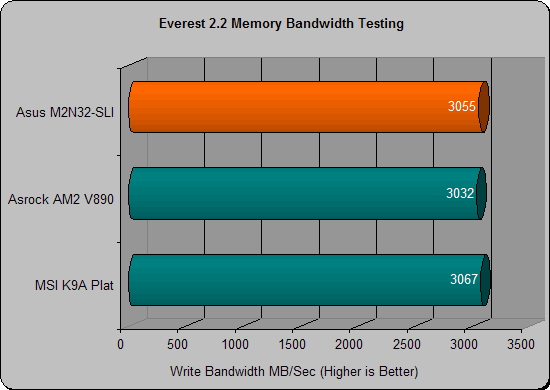
Sisoft; Sandra 2005 SR3a:
Sisoft Sandra 2005 is designed to test the theoretical power of a complete system and individual components. The numbers taken though are, again, purely theoretical and may not represent real world performance. Higher numbers represent better performance in memory bandwidth. The chart was based off of the unbuffered bandwidth scores.
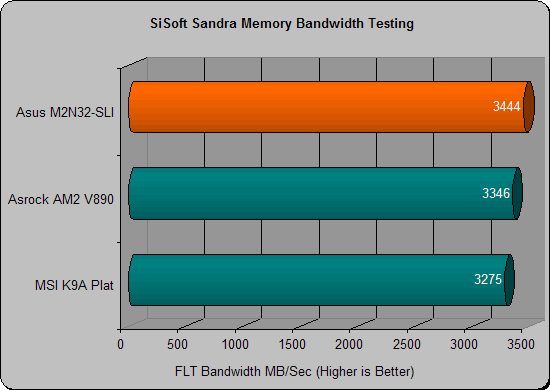
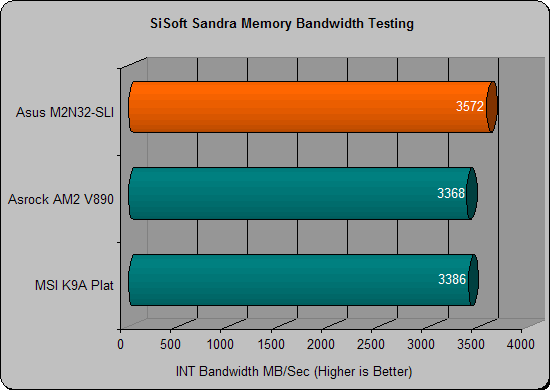
ScienceMark 2.0 Final:
Science Mark 2.0 is an attempt to put the truth behind benchmarking. In an attempt to model real world demands and performance, ScienceMark 2.0 is a suite of high-performance benchmarks that realistically stress system performance without architectural bias. All of our testing was completed on the 32 Bit Final benchmark version that is dated March 21st 2005.
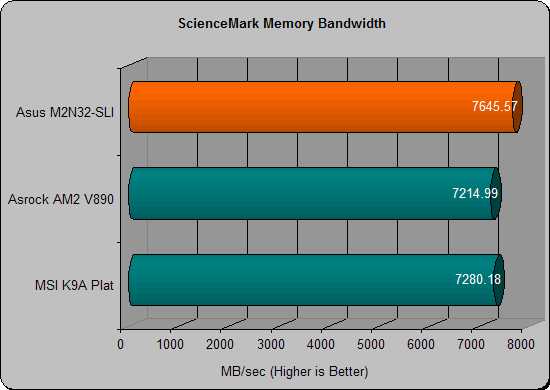
Now here was a great surprise to me. The Asus board, sporting its Nvidia chipset, pretty much dominated our memory benchmarks. I am not sure if it is the fine tuning that Asus is able to do on the board, or just the ability of Nvidia and their chipset that sets it apart in these benches, but it certainly speaks well of the board, no matter what the reasoning.
Super PI Mod v1.5:
Super PI is a program a lot of enthusiasts use to benchmark overall system performance, as the program is capable of calculating pi up to 33.55 million digits on a timer. Many overclockers and enthusiasts are in a battle to get the lowest Super Pi times possible. We use the 2MB test this time, as it demands quite a bit more stability than a 1MB test. Of course, most believe using the 32MB test is a must to prove stability.
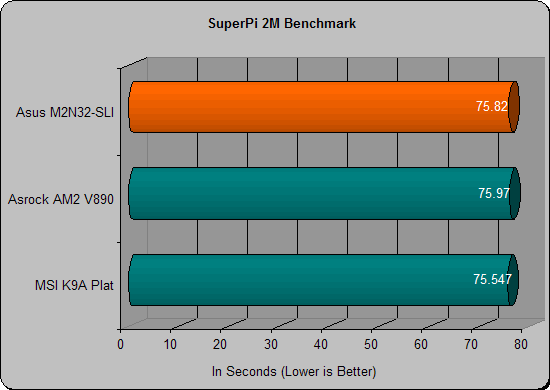
SuperPi shows us that these boards are pretty even for number crunching.
Hd Tach 3
HD Tach will test the sequential read, random access and interface burst speeds of your attached storage device (hard drive, flash drive, removable drive, etc). All drive technologies such as SCSI, IDE/ATA, 1394, USB, SATA and RAID are supported. Test results from HD Tach can be used to confirm manufacturer specs, analyze your system for proper performance, and compare your performance with others. HD Tach is very easy to use, quick, and presents data in easy to read graphs, including the ability to compare two storage devices on screen at the same time for easy analysis.
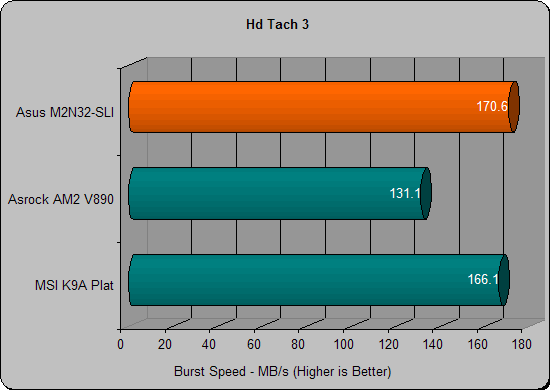
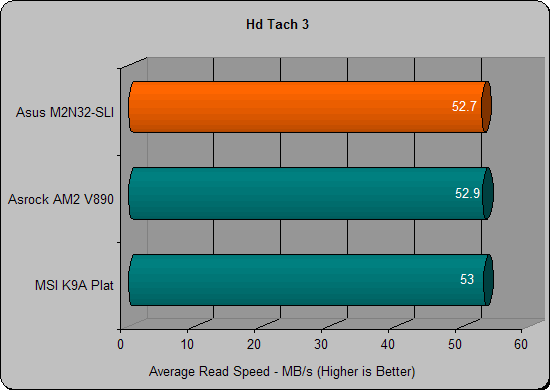
Testing the hard drives on the three different chipsets showed quite a bit of difference in the burst speeds. THe Asrock, with its Via chipset showed that it was just not up to speed copmpared to the ATI and Nvidia chipsets. The average read speeds were all very close though, showing little if really any difference.
Let’s move on to gaming!

Comments are closed.